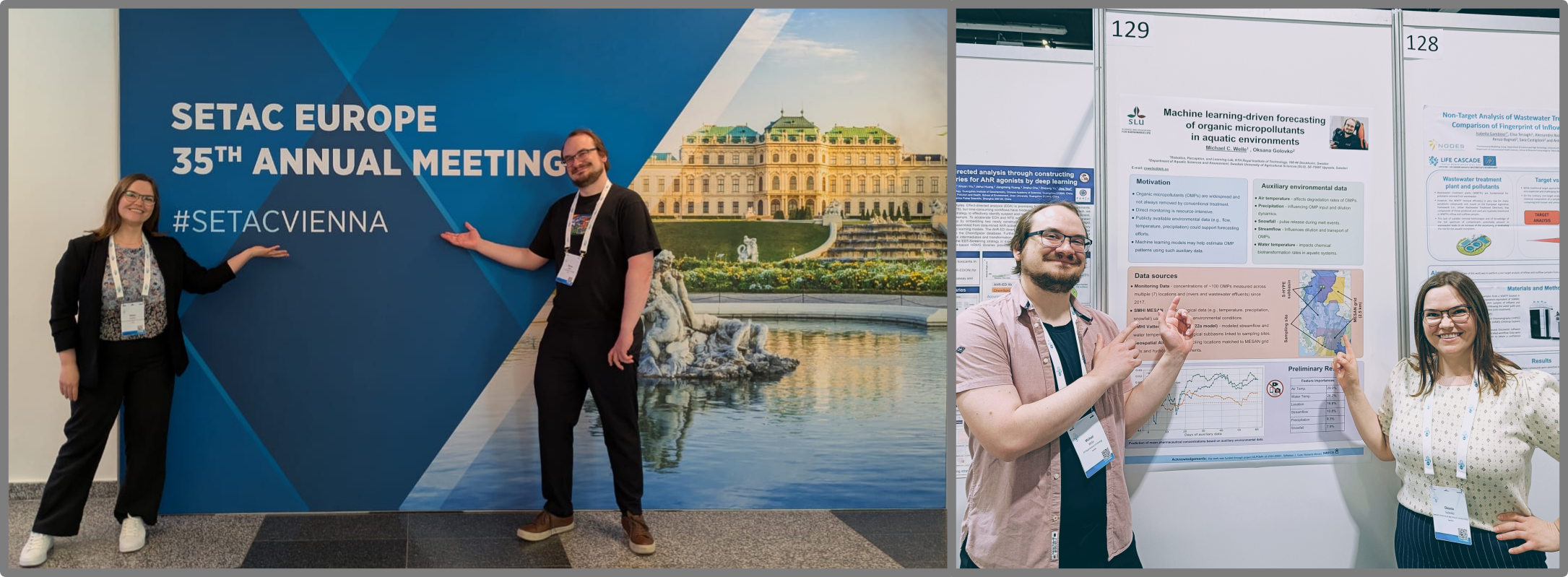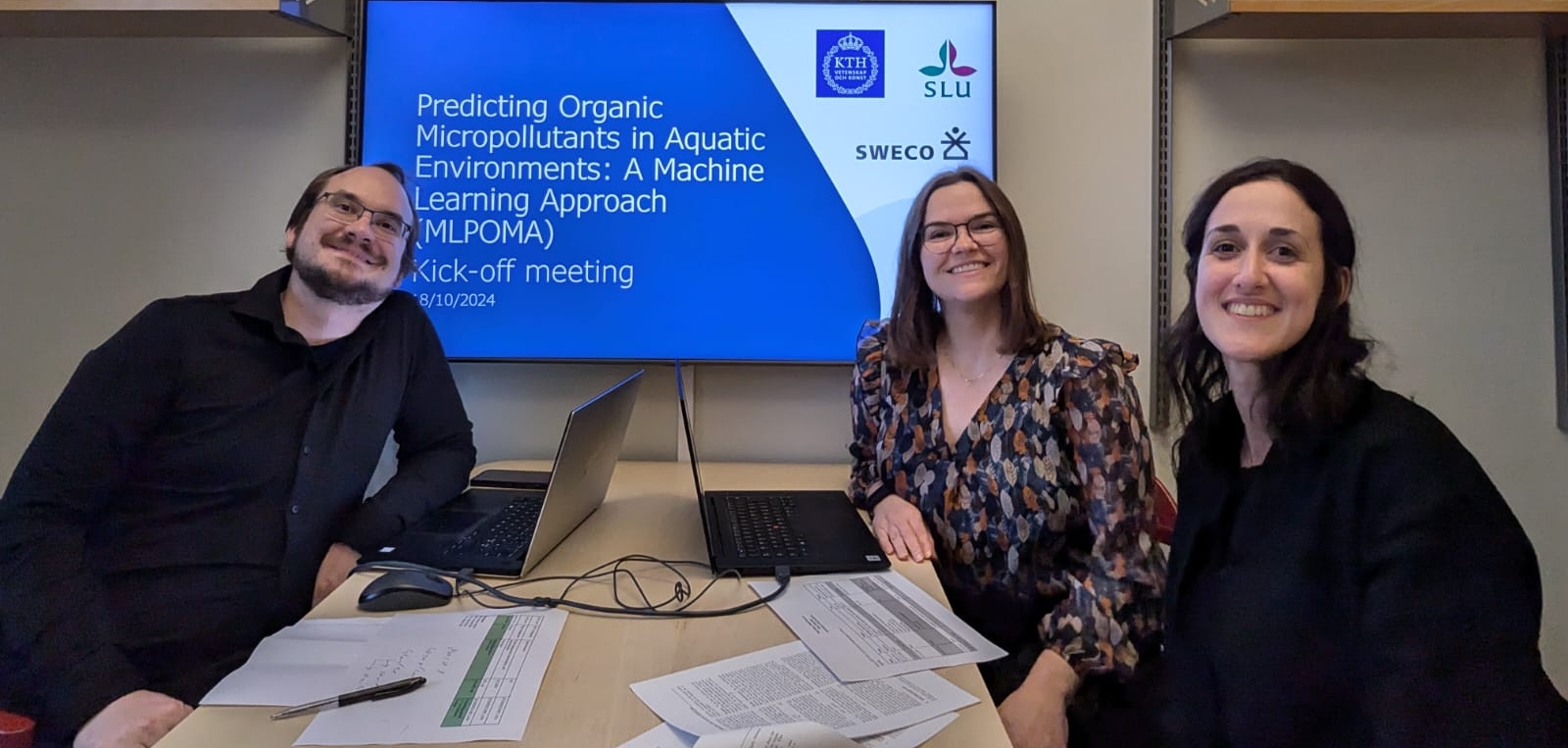Presented at SETAC Europe 2025 – Vienna, 15/05/2025
We successfully presented our poster “Machine learning-driven forecasting of organic micropollutants in aquatic environments” at the SETAC Europe 35th Annual Meeting, held 11–15 May 2025 in Vienna, Austria.
Presentation Highlights
- Presentation type: Poster Presentation
- Session: 3.08 - Sampling and Analysis Methodologies, and Environmental Behavior Studies for Emerging Organic Contaminants in the Aquatic Environment
- Date: Thursday, 15/05/2025

Poster presented by the MLPOMA team at SETAC Europe 2025 in Vienna
Our contribution emphasized the importance of using auxiliary environmental data—such as streamflow, temperature, and precipitation—to combat data scarcity in chemical monitoring. This approach is promesing to enables more robust machine learning models for predicting concentrations of pharmaceuticals in aquatic systems.
The project stands at the crossroads of environmental chemistry and Machine Learning, showcasing the power of interdisciplinary collaboration. We thank everyone who visited our poster and engaged in insightful discussions!
Abstract Acceptance - 30/01/2025
Our Abstract titeld "Machine learning-driven forecasting of organic micropollutants in aquatic environments"
got accepted for SETAC Europe 35th Annual Meeting, 11–15 May, Vienna, Austria!
Presentation Details
- Presentation title: Machine learning-driven forecasting of organic micropollutants in aquatic environments
- Presentation type: Poster Presentation
- Session title: 3.08 - Sampling and Analysis Methodologies, and Environmental Behavior Studies for Emerging Organic Contaminants in the Aquatic Environment: Recent Advances and Perspectives
- Presentation day: Thursday, 15/5/2025
We hope to see you there!
Website launched - 05/11/2024
The MLPOMA Website is now live!
Kick-off Meeting - 18/10/2024

On October 18, 2024, we held a productive kick-off meeting for our project focused on addressing the contamination of aquatic ecosystems by organic micropollutants (OMPs) through the use of machine learning (ML). Key topics discussed included the potential of ML for predictive modeling, feature selection, and anomaly detection, which can significantly enhance the identification and management of OMPs in water bodies.
The project aims to develop forecasting models that predict OMP concentrations in surface waters based on data from Waste Water Treatment Plants (WWTPs) and environmental parameters, offering a more cost-effective solution for monitoring. The models will help determine exceedances of threshold levels and guide further treatment steps.
Attendees emphasized the importance of high-quality data for training ML models, specifically datasets provided by the Department of Aquatic Sciences and Assessment (IVM) at SLU. We also discussed the integration of techniques such as SHAP and LIME to identify critical features influencing predictions, ensuring more accurate and interpretable results. Overall, the meeting set the stage for a collaborative effort aimed at improving environmental risk assessment and achieving Sweden's national goal of a non-toxic environment.

